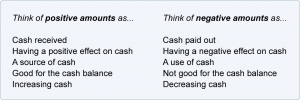
Intuit Inc. does not warrant that the material contained herein will continue to be accurate nor that it is completely free of errors when published. When recording accounts receivable, you want to post the revenue in the month you earn it. This will keep your accounting records accurate and consistent with accrual accounting. A typical aging schedule groups invoices by their number of days outstanding, such as 0-30 days, days, days, and over 90 days. Starting from Year 0, the accounts receivable balance grew from $50 million to $94 million in Year 5, as captured in our roll-forward.

Learn financial statement modeling, DCF, M&A, LBO, Comps and Excel shortcuts. The net cash impact is negative since the days sales outstanding (DSO) is increasing each period. However, the manufacturer is a long-time customer with an agreement that provides them with 60 days to pay post-receipt of the invoice. The difference between accounts receivable and accounts payable is as follows.
Accounts Receivable (AR): Definition, Uses, and Examples
The manufacturer placed an order and the requested components were delivered based on the purchase agreement. Business organizations that have become too large to perform such tasks by hand (or small ones that could but prefer not to do them by hand) will generally use accounting software on a computer to perform this task. Finance Strategists has an advertising relationship with some of the companies included on this website. We may earn a commission when you click on a link or make a purchase through the links on our site. All of our content is based on objective analysis, and the opinions are our own.
Accounts receivable are an important element in fundamental analysis, a common method investors use to determine the value of a company and its securities. Because accounts checkeeper receivable is a current asset, it contributes to a company’s liquidity or ability to cover short-term obligations without additional cash flows. When a company owes debts to its suppliers or other parties, those are accounts payable. To illustrate, Company A cleans Company B’s carpets and sends a bill for the services.
- The April 6 transaction removes the accounts receivable from your balance sheet and records the cash payment.
- This is a less sophisticated account receivable example than the retail consumer credit card, but it works the same way.
- A financial professional will offer guidance based on the information provided and offer a no-obligation call to better understand your situation.
- The risk can be tolerated if it produces income through finance charges or through increased sales.
What is the difference between accounts receivable and notes?
For one, it can help you optimize your cash flow and increase your working capital. Automating your accounts receivable can also help reduce the administrative burden of managing it, such as sending automated reminders, invoicing, and tracking payments. A good accounting system with tools for managing invoice accounts receivable can help you get paid faster, so you can focus on running your business. Customers at a grocery store or restaurant pay right away with cash or a card.
If you can’t contact your customer and are convinced you’ve done everything you can to collect, you can nci interactive stock chart hire someone else to do it for you. Though lenders and investors consider both of these metrics when assessing the financial health of your business, they’re not the same. A quick glance at this schedule can tell us who’s on track to pay within 30 days, who’s behind schedule, and who’s really behind.
What if they don’t pay?
The pro forma accounts receivable (A/R) balance can be determined by rearranging the formula from earlier. Additionally, accountants disclose the net amount of cash that is expected to be collected, as pro forma financial statement template for underserved area expansions well as any collateral agreements. Receivables that are expected to be collected within 12 months of the operating cycle are classified as current.
The IRS’s Business Expenses guide provides detailed information about which kinds of bad debt you can write off on your taxes. A financial professional will offer guidance based on the information provided and offer a no-obligation call to better understand your situation. Notes are a little more complicated and they follow a different accounting treatment. Other categories of non-trade receivables are disclosed separately if there is significant information conveyed to the reader by doing so. To assist the assessment of solvency, accountants categorize receivables based on when they are due. When receivables are discounted with recourse, the issue arises as to whether the transfer should be treated as a sale or as collateral for a loan.
Companies have to be careful before granting credit to customers that they don’t know or have experience with since these customers can default of the debt and never pay for the product they purchased. Receivables represent an extended line of credit from a company to client that require payments due in a relatively short time period, ranging from a few days to a fiscal year. To record this transaction, you’d first debit “accounts receivable—Keith’s Furniture Inc.” by $500 again to get the receivable back on your books, and then credit revenue by $500. If you have a good relationship with the late-paying customer, you might consider converting their account receivable into a long-term note. In this situation, you replace the account receivable on your books with a loan that is due in more than 12 months and which you charge the customer interest for. Following up on late customer payments can be stressful and time-consuming, but tackling the problem early can save you loads of trouble down the road.



